Is The Michelin Guide Coming to Bangkok?
Is a Southeast Asian Michelin restaurant guide just around the corner? And how would the red book alter Bangkok’s dining scene?
This March, our friends in the restaurant industry were all gossiping about the same thing. “The Michelin inspectors are in town this week,” they would say, conjuring up images of grumpy Ratatouille-esque food critics slipping quietly into restaurants throughout town. Bangkok has long been enamored with Michelin chefs, despite the French restaurant guide not covering our city. Chefs from Michelin-star restaurants regularly visit Bangkok’s five-star hotels and at least a dozen chefs based here have previously worked at Michelin-star restaurants. Some restaurants, such as Nahm, Yamazato, Sra Bua and D’Sens, are even spinoffs of restaurants in London, Amsterdam, Copenhagen and Montpellier respectively that have held, or still hold at least one Michelin star. But is Bangkok ready for its own Michelin guide? Who here deserves a star—or three? How will we fare compared to Kuala Lumpur and Singapore? Can we even afford this level of dining? And would the guide be relevant given Michelin’s hotly debated track record with Asian cuisines?
Michelin did not respond to our emails, so their imminent arrival is just a rumor at this point. But industry insiders believe a guide for Singapore, Bangkok and Kuala Lumpur is in the works with a scheduled release in 2014. Much of this speculation follows the announcement made by PACE Development Corporation Plc that Joel Robuchon, the chef with the most Michelin stars, would open at CUBE, the retail wing of the Mahanakorn building. “Robuchon and Michelin are very tight,” says Oliver Kramny of the Water Library group, whose flagship is located in Grass Thonglor. “When Robuchon arrives in town, Michelin always follows.”
Water Library is betting big on Michelin’s arrival. They have signed up Juan Amador, whose restaurant earned three Michelin stars in Langen, Germany. They plan for the chef to open five restaurants in the region, including two in Bangkok: one-fine dining venue and a more low-key restaurant. “The aim is to get three stars for one place and perhaps one star for the other,” says Kramny. The new Central Embassy mall, set to open this December, is also rumored to be pushing hard for a Michelin-star chef to get on board, if not in the mall, than at least in the adjoining Part Hyatt Hotel due to open in October 2014.
Were the Michelin Guide to sweep into town, it would not just be awarding out-of-town talent. Existing restaurants should get stars, too. Speculation is rife as to who would actually get a star, though. Chatree Kachonklin, of La Table de Tee, worked at one-star restaurant Roussillon, in London, and he thinks Ian Kittichai would be a likely candidate. “If a Thai chef got some stars, it would be so exciting,” says Chatree. “It would be a huge encouragement for all Thai chefs in the country.” While he is confident in local chefs’ ability to seek out the best local produce, Chatree is quick to add that cooking it is another matter: “Michelin-starred restaurants also really excel at the cooking technique and art part. And if they come here, it’s a chance for Thai chefs to understand that side of cooking. It’s exhausting but it’s fun.”
The Okura Prestige hotel's Elements restaurant's chef, Cyril Cocconi, who has previous experience working under multi-Michelin-star powerhouse Joel Robuchon is betting on another Thai restaurant, the Metropolitan Hotel's Nahm. Headed by David Thompson, Nahm had a Michelin-star in London, before he relocated the restaurant to Bangkok. "He makes really amazing food," says Cocconi. "And he's able to source all the best produce."
Pressure on finding that good produce will quickly mount, though. Chatree’s daily morning routine is to scour four different markets for his ingredients. “Lots of great local ingredients exist, but most go to the hotels. It’s a who-pays-more-gets-more system,” he explains. Chef Herve Frerard, of Le Beaulieu, who has long been described as one of Bangkok’s most serious contenders for a Michelin star, concurs. “I’m a consultant for the Royal Projects,” says Frerard. “So I get first pick for a lot of things. But honestly, I still have to import a majority of my produce. There's just no consistency here.”
Duangporn "Bo" Songvisava, who worked at Nahm in London, is now chef at Bo.lan (along with her husband, Dylan Jones) and recently won The Veuve Clicquot World's Best Female Chef Award. She thinks standalone restaurants may actually be at an advantage over hotels. "There's fantastic produce here. You just have to order it directly from small producers, and hotels just can't do that, because they order such big volumes."
Quince's Wilfrid Hocquet is another French chef with a star-filled resume that includes time working for Michelin superstar Alain Ducasse and the Pourcel Brothers (chefs of one-star Le Jardin des Sens, in Montpellier). Having recently arrived in Bangkok, Hocquet admits he was struggling to find not just produce, but also staff. "When the going gets rough, staff will just quit. It's very hard to get them to change how they work," he says. The soon-to-open Ku De Ta deployed a full-fledged marketing campaign to hire the 400 staff needed to properly run its restaurants and nightclubs. "To train staff is hard. To retain them is even harder," says Duangporn.
Gaggan Anand, of contemporary Indian restaurant Gaggan, thinks the front of the house will be the biggest challenge. “You’ll see Thai smiles as soon as you get off the plane at the airport, but the biggest disadvantage when the Michelin Guide arrives is probably the language barrier. Still, if Tokyo didn’t get penalized for that, then the Michelin Guide should respect our culture too,” he says.
One other crucial element might also be missing: diners. Imported franchises typically struggle in Bangkok. D’Sens, Zuma or Grossi never attract the kind of crowds you’ll see at Gianni's or Le Beaulieu, both of which are headed by charismatic chefs who know how to work the tables. “In Singapore or Hong Kong, seeing the chef is not that important,” says Water Library's Kramny. “But in Bangkok, the chef has to be there.”
There’s also the question of cost. “To get Joel Robuchon is so expensive. Even if he does get his three stars, you’ll never get your money back. To open a Robuchon restaurant is at least 1.5 million dollars [B45 million]. Half of that goes to Robuchon. Then there's the equipment he expects, the salary of a good head chef... The costs are very, very high,“ says Kramny.
“49 percent of my cost is produce. I’d be fired immediately if I worked in a hotel. The costs of running this restaurant are huge because I love great produce. But people call me expensive or overpriced,” says Beaulieu's Frerard. "I'm lucky to have been here 15 years, and I have a hiso clientele. But you can't charge much more in this town than what I'm charging, which is B2,500 to B3,500 per person for the food alone."
At those prices, can fine dining turn a profit? Not according to Kramny, who says, “Three-star Michelin restaurants aren’t designed to make money. The money comes from merchandising, like books, or engagements for the chef. Usually, the place is subsidized by the hotel or owner somehow. It’s a vanity thing.”
The other big question is whether Bangkokians will even care about Michelin's arrival. Michelin’s first Japan guide was panned by some critics for being out of touch and irrelevant. With so many fantastic tiny eateries in every little back alley of Tokyo, Michelin was accused of missing out on the dining scene outside of the high-end establishments. Celebrity Chef Bobby Chinn adds that Michelin's obession with silverware and sommeliers isn’t what’s hot these days: “If you fast forward to look at what’s going to happen in the food world, it’s moving to the street.”
“No one can compete with our street food,” says Gaggan. But the chef believes Michelin just might be able to tap into that. “I tried a Michelin-starred ramen restaurant in Japan. It was perfect. And I hope that they will understand our khao mun gai shophouses, too, as it’s all about the same dedication.” Will your favorite restaurants—and khao mun gai stalls—get the stars they deserve? Maybe not all. But the red book is bound to move our dining scene forward.
Gaggan
68/1 Soi Lang Suan, 02-652-1700. Open daily 6-11pm
Elements and Yamazato
The Okura Bangkok, Wireless Rd., 02-687-9000
La Table de Tee
69/5 Soi Sala Daeng, Silom Rd., 02-636-3220. Open Tue-Sun 6:30-10:30pm
Bo.lan
42 Sukhumvit Soi 26, 02-260-2962. Open Tue-Sun 6:30-11pm
Le Beaulieu
G/F, Athenee Office Tower, Wireless Rd., 02-168-8220-3. Open Tue-Sun 11:30am-2:30pm, 6:30-11:30pm
Water Library
The Grass Thonglor 12, 02-714-9292. Open Mon-Sat 6pm-1am. 2/F, Chamchuri Square, Rama 4 Rd., 02-160-5188. Open daily 11:30am-2:30pm, 6-9:30pm
Quince
Sukhumvit Soi 45, 02-662-4478. Open daily 11:30-1am
D'Sens
22/F, Dusit Thani Hotel, 946 Silom Rd., 02-200-9000. Open Mon-Sat 11:30am-2:30pm, 6:30-10pm
Nahm
G/F, Metropolitan, Sathorn Rd., 02-625-3333. Open Mon-Fri noon-2:30pm; daily 7-11pm
Sra Bua
1/F, Siam Kempinski, 991/9 Rama 1 Rd., 02-162-9000. Open daily 11am-2pm, 6-10:30pm
Advertisement
How did Jay the Rabbit start?
I started writing captions and text bubbles on photographs of rabbits I’d get off the internet. But I couldn’t always find rabbits that really matched the mood I was trying to create so I tried to draw my own. First I used apps, but I didn’t like that so I switched to pen and paper—and it worked! Jay the Rabbit’s look was inspired by Fifi Lapin, a fashion blogger. It quickly became popular, then my friends encouraged me to start a page and here I am.
Do people at your office know about your identity?
Some of my friends know, but when the page launched, nobody wanted to know who was drawing Jay. People wanted to imagine the rabbit on its own—or make it their own. They connected with it. Seriously, only four people have ever asked who draws the comic.
Why do people connect with Jay the Rabbit so strongly?
Because every page these days is corporate, informative, but people work in an office, in a box, and they don’t have a window. This page is their window to look out of. People want something funny, something to express themselves in a positive way. Out of all the comments Jay gets, there is no bad words, no politics. The page didn’t grow gradually. It was an instant hit. It was a case of right place, right time.
What kind of comments do people leave?
They connect to Jay’s experiences. They get to talk about themselves. For example, there’s the “nan-ok” comic [based on the hit song with a dance routine where women push out their breasts] where the rabbit complains it has nothing to nan-ok so it has to put things in this old grandma bra. In the comments, the girls were shouting, “Oh you know my technique!” And the guys were saying, “Oh I get it now; that’s why my football socks disappeared!”
So guys comment, too? It looks like the themes are very feminine.
Look, every office is the same. The women will talk, gossip, find something to eat. And the men, they want to know what they’re talking about but they can’t be seen hanging out with them. They want to know the gossip, they want to know what was in the lakorn last night. So men come to Jay the Rabbit to know what women think. Actually, 40% of my readers are guys and it’s going up. It’ll be 50/50 soon.
You have over 145,000 fans. Do any of them stand out?
One woman, she is about 45 years old, she sells fresh meat in the market. She doesn’t have a lot of friends. She works very hard. She uses a mobile phone to read the comic and she comments every day. Once I did a charity post card for dogs and she bought some, decorated her shop with cards and she sent in a picture. Another one of my fans, her mother cannot move on one side, she’s half-paralyzed. She can hardly smile. But my friend shows her Jay on an iPad and she starts to smile. Sometimes, I’m so touched by messages from Jay’s fans, I want to cry.
Visit Jay the Rabbit at www.facebook.com/jaytherabbitofficial
Advertisement
This February, two floors of the Ma Du Zi hotel were opened to the hip and the hi-so, who mingled and air-kissed while sipping free cocktails and browsing contemporary art. Each room had been taken over by a different gallery, and hung with a variety of pieces, all of which were for sale. The organizers would not reveal sales figures (and galleries that did speak had mixed results) but the event definitely felt like a watershed moment. The faces peering at the artworks did not all belong to the gallery show opening regulars, and there was an uprecedented red-carpet-event buzz to the whole thing. Whether it was the visibly affluent attendees or the fair's obvious commercial objective, it also underlined that art wants buyers, not just admirers.
The Hotel Art Fair hasn’t been the only sign that well-to-do Bangkokians may soon turn to buying art with the kind of enthusiasm they previously reserved for cars and watches. The opening of the private Museum of Contemporary Art (MOCA) by DTAC founder and chairman Boonchai Bencharongkul last year means paintings from Thai National Artists have become status symbols on a par with a BMW or Rolex. At the other end of the spectrum, more artists have been seeping into popular culture, flirting with celebrity status even, through popular events such as BUKRUK, which cemented Alex Face’s rapidly growing notoriety.
The gallery owners we spoke to say none of these tremors have converted into a huge boost in sales—yet. In Sotheby’s Hong Kong auctions, contemporary Thai art remains more appreciated by foreign collectors with a Southeast Asian view than among Thais themselves. As for works by National Artists, which are appreciated locally, they are still usually bought directly from the artist, and then traded from one collector to an other or through obscure middlemen—hardly a reliable market likely to inspire much trust.
The good news is that Thai art is cheap, but with the market still this immature, low prices alone don't necessarily mean it’s a good investment. Even Sotheby’s expert Mok Kim Shuan admits that this is either the right time to buy, or a bit too early. For the Thai art market to mature, it will need many more art fairs, more discerning buyers and maybe better artists, too. Here, we speak to a diverse group of experts about their take on Bangkok’s art market.
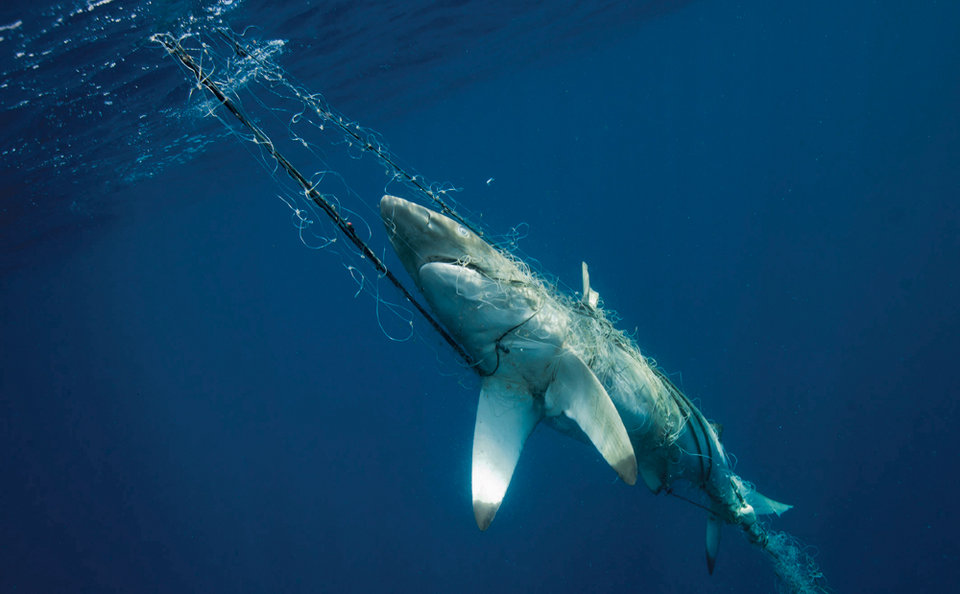
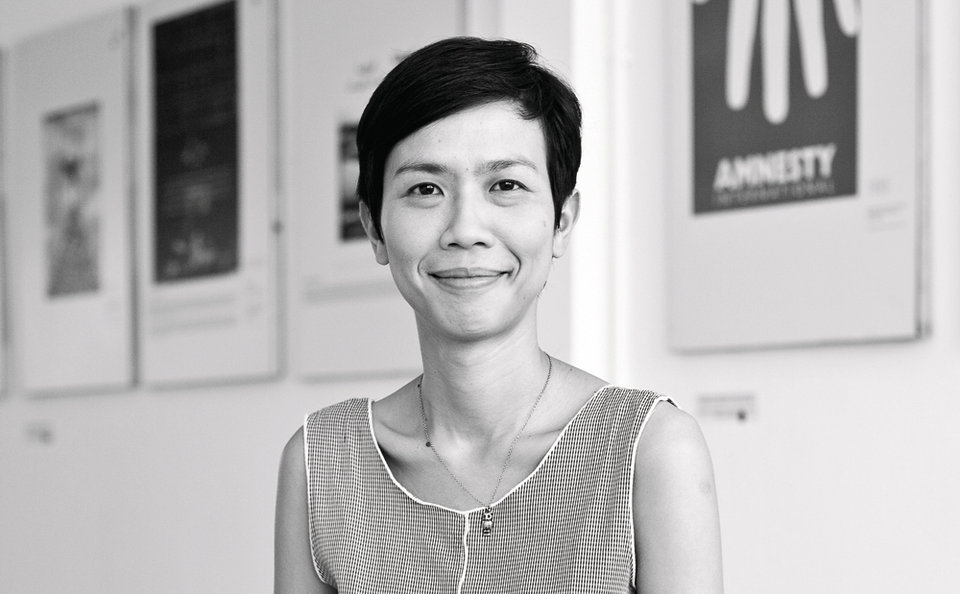 I once heard you say that WTF, the bar, was designed to fund the gallery. Is that still the case?
I once heard you say that WTF, the bar, was designed to fund the gallery. Is that still the case?
Well, WTF is not focused on commercial art, and we still don’t have pressure to sell. The last three shows didn’t sell, actually. But it’s our policy that once or twice a year we choose work that we know will be more commercial. Our financial records show the gallery is actually sustainable. It doesn’t make money. But it’s sustainable.
Why don't the shows sell?
WTF is a platform for undiscovered artists. After doing a show with us they go on to more commercial spaces, and usually sell a lot more. Our last show contained outstanding pictures from a World Press Photo Award winner, but they were really violent pictures. And another section was about underwater life, and they didn’t sell because it’s a social cause.
How do you set the price?
Normally, I let the artist set the price, and they price it so that even a single sale can cover the printing and framing for all the works in the exhibition, and maybe make a little bit of money. Then they submit the price and we look at how many shows they’ve done, whether they have collectors—and we may suggest it’s too high. Mostly our stuff is around B7,000 to 25,000.
What’s a show that did sell?
Albert Yonathan. He has collectors all over the world, and is representing Indonesia at the Venice Biennale. But nobody knows him here. He wanted to sell his art for B40,000 or B50,000 a piece. It is really beautiful but I asked him drop the price by about 20% for Bangkok. We sold 10 or 11 out of 20 of his pieces.
What’s your cut?
At WTF we get a 30-35% cut. Bigger galleries would be closer to 50%. The younger the artist, the bigger the cut, because the gallery is discovering the artist. So they will sign a contract saying the artist can’t have a show anywhere else.
Say I bought a piece of art. Then I want to sell it a year later. Where would I sell it?
Good question. If you’re in the art circle, people do buy from each other. But it’s the beginning. In Thailand, nobody is thinking of art as an investment.
Is the market changing?
I wouldn’t say there are more buyers, but definitely a lot more galleries and platforms for art. And that’s how it grows. First you build the skill, you let artists have more shows. Then you get attention from the buyers.
How about the artists?
Mostly, I don’t know anyone who can just be an artist and live from that. Except maybe Rirkrit Tiravanija.
WTF Gallery & Cafe, 7 Sukhumvit Soi 51, 02-662-6246
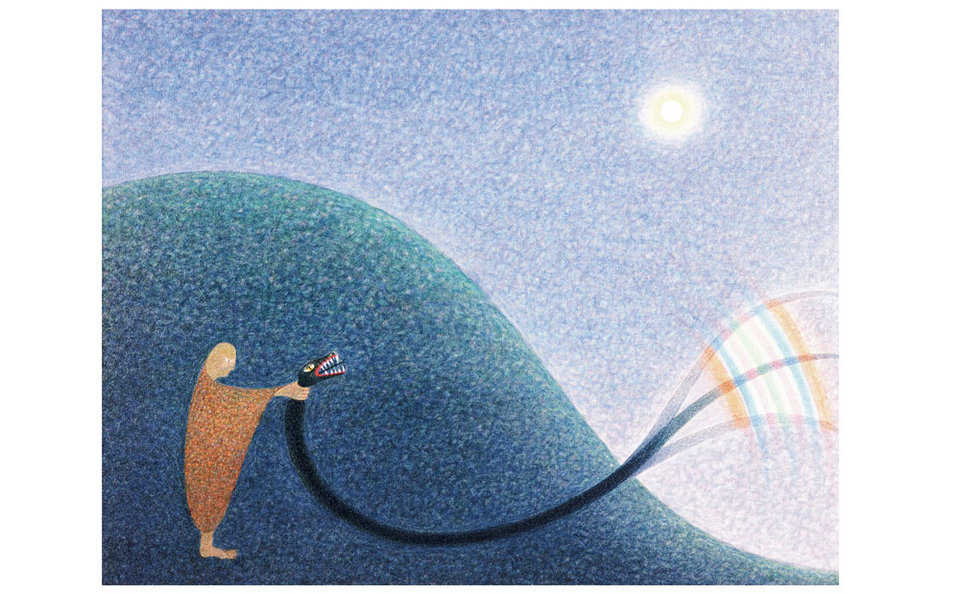
B350,000
Worrariddh Riddhagni. 80x100cm.
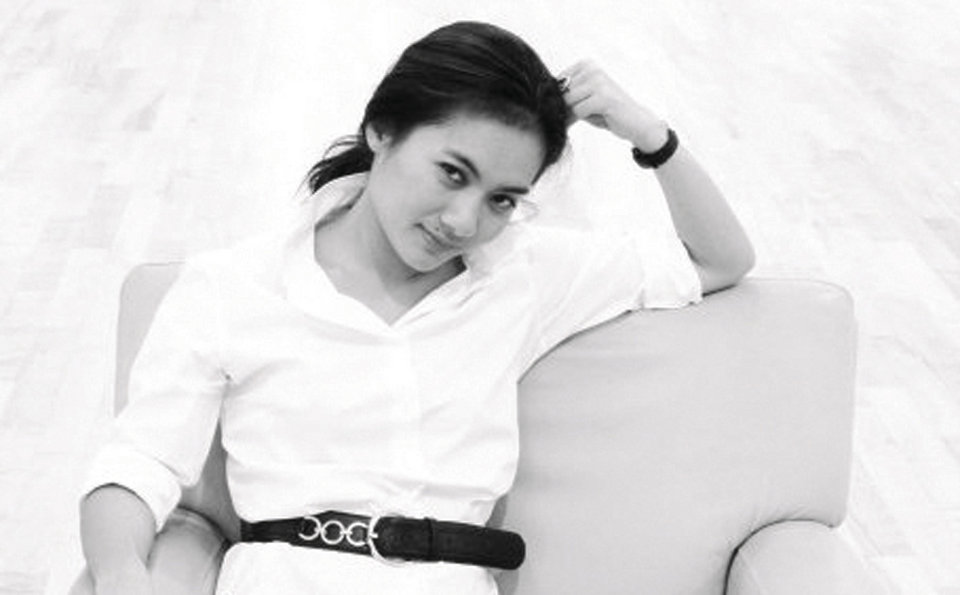 Sombat Permpoon is both a shop and a gallery?
Sombat Permpoon is both a shop and a gallery?
Yes, mainly we deal with the secondary market, actually. We started as collectors. A lot of the artworks we have here are ours that we collected over time. Our other operation is the exhibition space, with shows rotating every one or two months. We take a 30 to 50% cut on those sales, the rest goes to the artist.
What sells the most?
Most people come to us because they know that we sell artists that are really established. They want someone famous, whether for their own status, or because of the financial value. But some people just buy what they love. They aren’t concerned about the name. That type of client is mostly foreigners: they have money to spend and appreciate quality but don’t know the local artists. The third type of clients are really educated about art, they know exactly what they want.
How much do they sell for?
From B2,000 to over B5 million. Our Thawan Duchanee are all sold out, they went for about B4 million each. In the past five years, we’ve sold about six or seven. But you’ve also got inexpensive decorative art. That’s very easy to sell. People buy it to furnish offices, as corporate gifts.
Has the typical buyer changed over the years?
There are definitely younger collectors now, second or third generation Thai-Chinese, educated abroad, and they have this appreciation of the arts. The problem in Thailand is that we’re such a small community, buyers still buy directly from artists or collectors. And a lot of contemporary artists that do appear in auctions outside of Bangkok don’t sell here. It’s a matter of taste, the buyers [for their kind of art] are not Thai.
Sombat Permpoon Gallery, 12 Sukhumvit Soi 1. 02-254-6040.
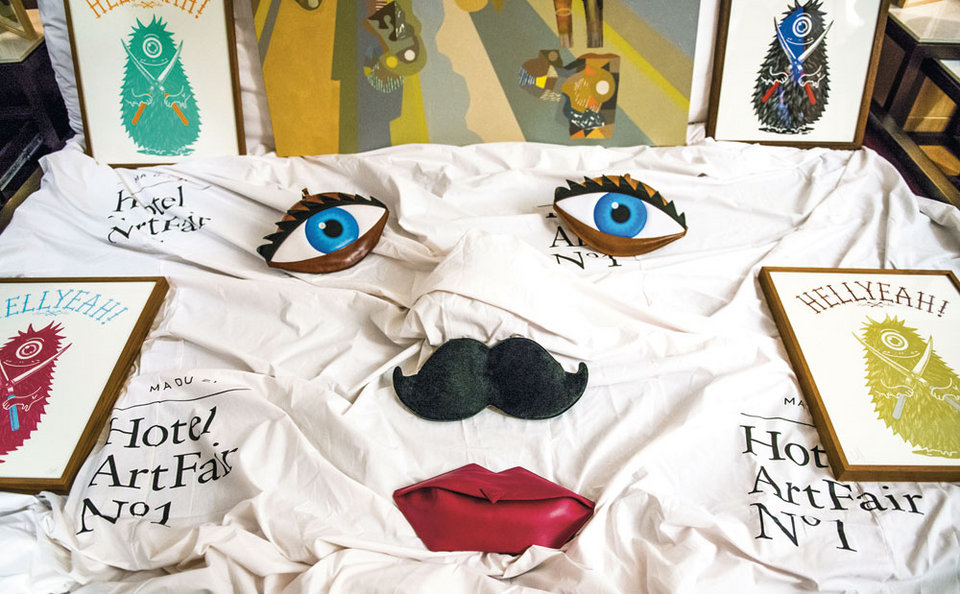
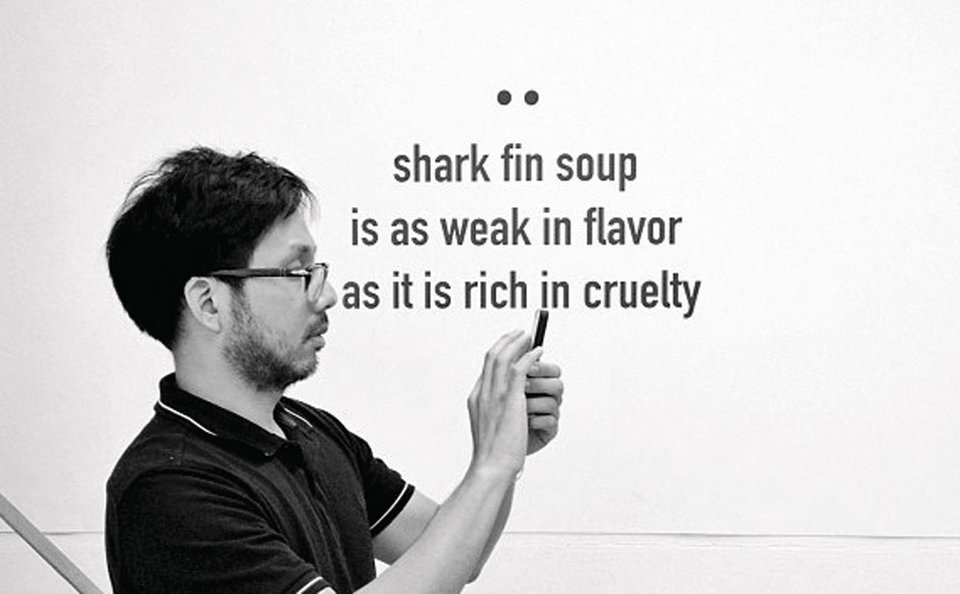 What was the motivation behind the Hotel Art Fair you organized last February at Ma Du Zi?
What was the motivation behind the Hotel Art Fair you organized last February at Ma Du Zi?
My true motivation was to bring people together. Galleries always complain that no one comes to their exhibitions. They ask, “Why are people not interested in art?” People are interested, actually, in the right context. But people are busy, stuck in traffic. The Hotel Art Fair allowed the galleries to come together in the one central location.
How were sales?
I think the galleries were very happy with the sales. I got the 15 rooms for very little and I received a small commission on the gallery sales.
What was the effect of the art fair?
This kind of event makes people relax. When I actually went into the rooms, I could feel it. It’s more intimate. You have your friends calling you over, tapping your shoulder, “Hey, let’s go check this room.” It’s the kind of atmosphere I want to create for shopping. A friendly environment in a friendly manner, where you dress up. You know, Thais don’t like seeing something without a price tag. And you always need something to lure people in so I asked my celebrity friends to join and they know a lot of people.
When is the next one?
The galleries keep asking me that. Soon, but probably in a bigger venue, with a couple more galleries and more international galleries that are in Southeast Asia. But I really want to keep it local and low-key. I don’t want to turn it into Art Basel.
Are artists making a living?
There are some but few. I think they often just stop making art and get another job, just like I did. I used to be a starving artist in New York before I came back here.

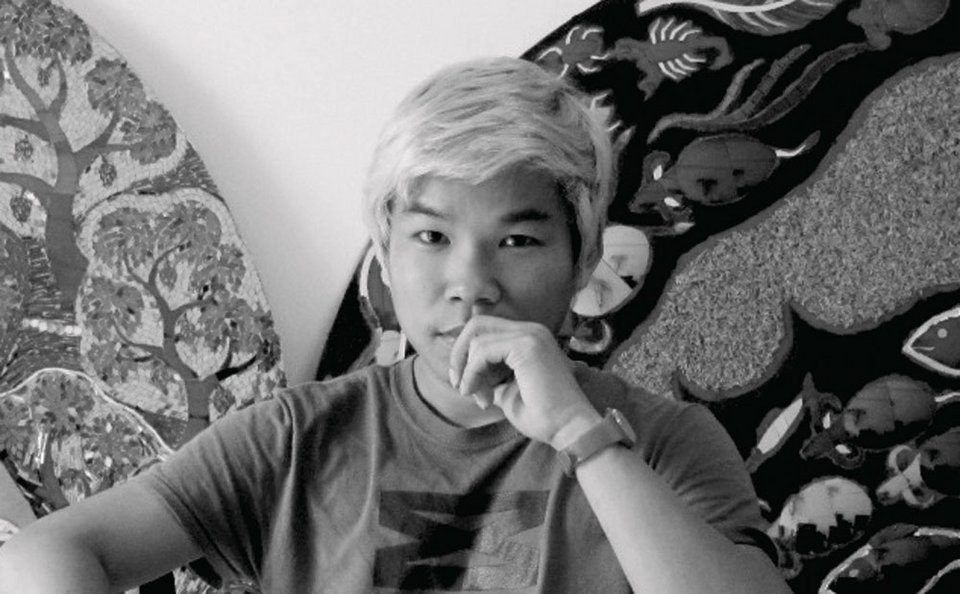 As an artist, can you make a living?
As an artist, can you make a living?
My relationship with Whitespace is just pro bono. We are planning on opening a new gallery in July, near Sofitel So in Sathorn, and I will just be a curatorial advisor. So I do make my living as an artist. But it’s very rare in Thailand. It’s not so easy. I did go through that moment where you can’t live from it. My market is larger, it’s more international. That was my plan, to reach a global level as soon as possible so I could get more sales. It's not the same as local artists depending on the local market. I know maybe one other artist who actually makes a living from her art, but there are very, very few under 30.
How much is the art at Whitespace?
At Whitespace, we sell for B30,000-B200,000. It depends on the profile of the artist: their biography, experience and the quality of the artwork. The buyer might just like the art or they might buy it as an investment, so the experience of the gallery is important, to calculate the quality.
How is the local art market?
There are not that many local buyers or collectors. The market hasn’t really grown so much. People don’t understand how to invest in art. It is changing but very slowly. The confidence in the investment is not there. People just don’t get it.
So if I buy one of your photographs and I want to sell it a year later, how does that work?
You could go back to the gallery and maybe they could help you resell it. Or auction it. Last year, in May, at Christies in Hong Kong, they auctioned one my photographs, Isarn Boy Soi 4. It had been bought for B50,000 at Whitespace and it was estimated at B80,000, starting price, but it didn’t sell. It’s going up for auction again this year. If it sells, I’ll adapt my prices to that new price.
What’s Whitespace’s cut?
Whitespace takes 50%. I think it’s standard. The gallery business has to be able to run, too.
What needs to be done to grow the market?
I believe there are people with enough money out there, but the galleries have to give them more confidence. They need to be told that they’re not just buying art because they like it but also as an investment. That’s how we’ll grow the market.
WhiteSpace Gallery, 2/F, Block 16, Lido Theater, Siam Square, Rama 1 Rd., 02-252-2900.
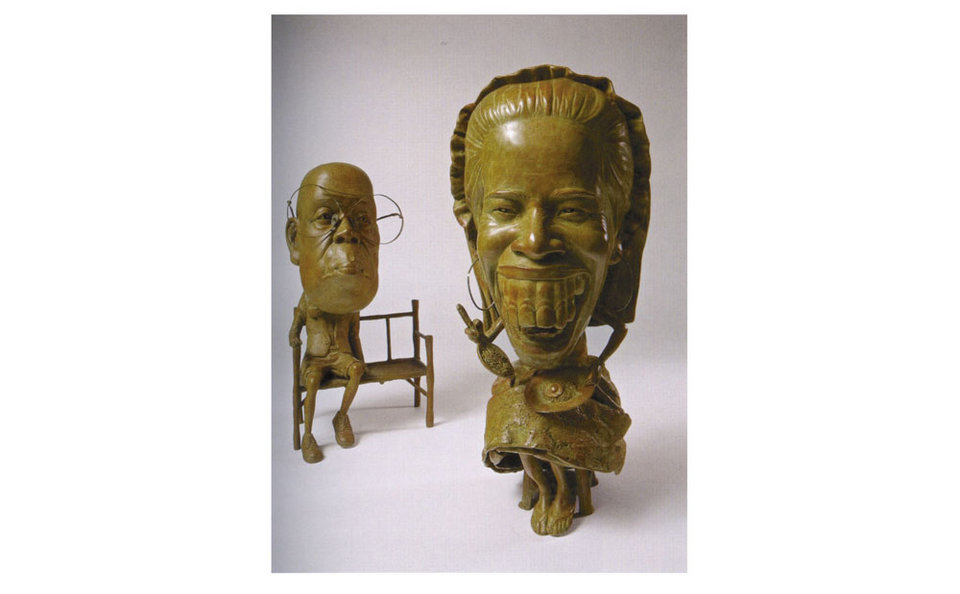
 Why aren’t we seeing contemporary art auctions in Thailand?
Why aren’t we seeing contemporary art auctions in Thailand?
Well, there are many galleries—artworks are readily available. But the approach towards art is more conservative, always going through friends and dealers. This is not to say that it will not change in the future. Once the momentum of collecting is there, there will be more avenues, such as auctions.
What does it take to get there?
More effort in promoting artworks by galleries, by artists. There should be a fair showcasing Thai artists, raising awareness. Major cities have this, not just to attract the local crowd, but to attract regional or international buyers, too. What is lacking is a more concerted effort among the galleries and the artists, and perhaps even the collectors and authorities, to come up with a platform to promote fine art.
Who is buying Thai art at your Hong Kong auctions?
Art lovers! For now, a lot of the works are collected by regional collectors of contemporary or modern period artists. They’re seeing it as part of a Southeast Asian collection. This kind of art is still very accessible.
What's the profile of the seller?
They’re from all over. But we’d like to see more Thais—the Thais who currently only buy from galleries and shows.
What’s your cut if you auction off a painting?
Well, first we need to assess it and determine if there’s a market for it. Then we take it as a consignment and draw a commission from that, which can be about 10%.
Which artists in Thailand are marketable?
Currently, the ones showcasing their work in the major Thai galleries. I can’t name names but the art market knows who these galleries are. For me, the most important thing is to not just have the demand from abroad, the local community’s support is much more important. An artist should have a strong home base.
Is the Thai market growing?
We are seeing increasing activity from the Thai market, more Thais coming to the auction. For Southeast Asia, the two big markets are Indonesia and the Philippines. When we first started in the Philippines, it was similar in many ways to Thailand today, with a lot of collecting going through middle men. But they opened up to buying and selling through auctions and it’s taken their art market a lot further—and it’s showing in the figures. In Thailand, it will be the same. Local support is very much needed. When regional buyers see more exposure for Thai artists, they’ll hop onto the bandwagon.
Is now the right time to buy Thai art?
Sure, there’s no better time to start. It might be a bit too early. Thais aren’t open about publicly showing [and selling] art. Maybe it’s the culture. People tend to be a little more humble or modest. It’s going to take some time to cultivate this way of procuring or selling art.
*Estimated prices for Sotheby's Apr 6 sale of Modern and Contemporary Southeast Asian Paintings which took place in Hong Kong. Final sales were unavailable as of press time. Visit sothebys.com for details and upcoming sales.
Advertisement
Most headphone makers push really hard on the bass and treble, which tends to make pop and R&B sound their punchiest. With the Bomber headphones, iPhone accessories maker Krussel, in collaboration with British heavy metal band Motorhead (a blast from the 70s and early 80s), is aiming for something that’s friendlier to rock, with a more neutral response. Even though the headphones are being marketed as insanely loud, we found that, as a result, these headphones are much more versatile than, say, Beats by Dr. Dre.
+ Rock sounds great.
+ So do original soundtracks and classical music. Jazz is pretty good, too.
+ Nice touches: the weaved cable doesn’t get all twisted, 90-degree-angle gold-plated plug, mic and controls for smartphones on the cable.
+ Light and comfortable, particularly the headband, which has two little pads to distribute the weight firmly and evenly, even when walking.
- If you listen mainly to pop and R&B, you might prefer punchier headphones designed for that kind of sound.
- Did we mention the tusked hell beast prominently etched on the headphone cups?
- Like many headphones, they start hurting your ears after 45-60 minutes. Maybe the bigger “Motorizer” model, which fits around your ears, not on them, would be comfier.
- Sound isolation is not that great, so you end up listening to your stuff quite loud in noisy places (on the BTS, for example), which is bad for your ears.
- The plastic feels a bit cheap. Overall, the headphones don’t feel too premium.
Verdict: The Motorhead Phones line also features two in-ear earphones. We tried the “Trigger,” which we didn’t like at all (tinny sound, no controls on the cable, cheap-feeling materials). In fact, we’re not exactly moved by the whole Motorhead branding. “Because like us, these don’t f*** around,” says the box. “If it’s too loud, you’re too old!” Are they being ironic? Motorhead’s front man, Lemmy, is 67! Still, we find these headphones are a great option for those who listen to more than the usual pop/r’n’b hits. They really sound great with all kinds of music, even when played at civilized volumes. Call us old, but for Johann Strauss, Jim Morrison, Miles Davis and, OK, maybe a bit of Motorhead, too, the Bomber gets our approval. US$99.99 at www.amazon.com
Advertisement
Istanbul is hot. While the rest of Europe continues to sink deeper and deeper into depression, the Turks are busy attending art openings at private galleries, chugging raki on sun-drenched rooftops and stocking up on handmade crafts with contemporary twists. Istanbul is also sexy for another reason, and this one is very practical. Turkish Airlines flies newish planes to every corner of Europe, and Istanbul makes for a much more exciting stopover than Dubai or Qatar. So even if your plan was to check out London or Paris, or you’re headed to a meeting in Berlin, Istanbul is just about the most pleasant way we can think of to break up that long flight. Not that Istanbul isn’t a destination in its own right. As well as being a contrast of old and new, the city is also right at the point where the European continent meets Asia. This heady mix means one second you’re watching an old man sipping coffee in a café that could be in an old street in Lisbon, the next you’re walking past crumbling wooden houses that look like Russian dachas, and finally the call to prayer rings out, reaffirming the city’s Arabic heritage.
Old Stones
The Ottoman Empire was the world’s wealthiest and most powerful for centuries (mostly during the 15th to 17th centuries). As a result, the city is dotted with elegant wooden villas, domed mosques and minarets reaching for the sky. How many you can take in depends on your passion for the intricacies of Islamic art and Byzantine architecture. The good news is that the Blue Mosque, the Topkapi Palace and the Aya Sofya are all within a very short walk of each other, in an area called Sultanahmet. (Just grab any free tourist map and off you go.) More importantly, Istanbul is the perfect city to get lost in, as charming streets abound. If that’s too daunting, make sure you at least stroll down Soğukçeşme Sokağı, a row of perfectly restored wooden homes behind Topkapi Palace.
Buzzing Art
Istanbul has seen some healthy competition between its art patrons of late. The result is a string of new art galleries of very high quality. The most impressive is Istanbul Modern (Meclis-i Mebusan Caddesi, Liman İşletmeleri Sahasi, Antrepo 4, Karakoy, +90 212 334-7300). This former warehouse designed by Italian architect Monica Bonvicini devotes several thousand square meters to contemporary Turkish artists—and sweeping views of the Bosphorus.In 2006, Orhan Pamuk won the Nobel Prize in literature, and he has now sold over 11 million books in 60 languages. His latest novel, The Museum of Innocence (Çukurcuma Caddesi, Dalgıç Çıkmazı 2, +90 212 252-9738), inspired him to create an actual museum by the same name crammed with small objects like old movie tickets, sepia photographs and household goods. It doesn’t sound like much but it comes together as a touching portrait of the Istanbul of yesterday.
Rooftop Sundowners
There’s nothing like strolling through a beautiful city to work up a thirst. One of the most stunning backdrops for your shot of arak liqueur is the Blue Mosque, whose colors famously shift as the sun sets. There’s a whole row of hotels with terrace bars on Ticarethane Sokak, such as Istanbul Hotel Nomade (Divanyolu Caddesi, Ticarethane Sokak 15, +90 212 513-8172). To oversee the old town (Sultanahmet), you’ll need to cross the Golden Horn inlet and find a rooftop bar in Beyoğlu, like the one at Anemon Galata (Bereketzade Mahallesi Büyükhendek Caddesi Kuledibim, +90 212 293-2343), right by the Galata Tower, whose views sweep over the tower itself, the Golden Horn and the Old City. If you’ve got a third evening in town, we’d recommend catching the ferry from Eminönü to Üsküdar. Not only is it a great ride but you’ll find tea houses there to smoke a nargile (shisha) pipe while the Bosphorus and the city are gradually shrouded in darkness. (At the pier, simply go right towards Şemsi Pasa Mosque; the cafés are just after the mosque.)
Boutique Beauties
The Grand Bazaar’s architecture is stunning. But when it comes to shopping, the amount of stuff in there can be intimidating and the sales tactics can be very aggressive. In fact, it’s not a very good place to look for trinkets to take home unless you’re a toughas-nails bargainer. And if you’re serious about buying a genuine Turkish rug, they cost hundreds to more than a thousand in Singapore dollars! Still game? Sisko Osman (Zincirli Han 15, +90 212 528-3458) are well respected and, at the very least, the shop is in a lovely part of the bazaar that you should absolutely see.For something more modern (and a lot less overwhelming), check out the boutiques in Beyoğlu. Start with the Tunel area, just next to the funicular. Apart from all the cool places in that hip enclave, we also stumbled on Hic (Haci Mimi Mah, Luleci Hendek Sokak 35, Tophane Galata, +90 212 251-9973), a contemporary crafts store in a residential street.
Hot Bites
In the old town, we recommend Balikci Sabahattin (Seyit Hasan Koyu Sokak 1, +90 212 458-1824). Although its starched tablecloths and well-heeled guests say special occasion, the prices are not too bad given that you’re dining under the trees by an old Ottoman mansion. The food is incredibly fresh, simply prepared seafood and some excellent mezze (small plate appetizers). Do book ahead, though. Still in the old town, there’s a homey bistro that gets kebabs, that quintessential Turkish specialty, just right. Of course, Ziya Sark Sofrasi (Alemdar Caddesi 28, +90 212 512-7750) also has a wide selection of super fresh mezzes to go with those grilled meats.After your bazaar shopping, hit up Hamdi Et Lokantasi (Klacin Sokak 17, +90 212 528-0390). The views of the Golden Horn are amazing but do book ahead for a terrace seat. Here, too, the food is a mix of well-executed kebabs and flavorful mezzes.In Beyoğlu, by the Istanbul Modern museum, you should drop by Fasuli Lokantalari (Iskele Caddesi 10-12, +90 212 243-6580). We love the old-school bistro vibe and uniformed waiters. The hearty Anatolian-style beans cooked in butter and meat are not exactly light, but it’s a nice change from all those kebabs.
Getting There
Singapore passport holders don’t need a visa for travel up to 90 days. Turkish Airlines flies direct from Changi Airport to Istanbul’s Ataturk Airport, from €1,550 (S$2,490) return and Singapore Airlines flies the same route for S$1,743 return.
Where to Stay
Park Hyatt Istanbul Macka Palas
Housed in a 1922 Art Deco building by Italian architect Giulio Mongeri, this hotel saw its interiors revamped by New York Design firm Gerner Kronick + Valcarel. It’s a combination of last century opulence—dark parquet floors, 19th century chandeliers—and 21st century design—giant sky windows and a hammam-inspired spa. Rates start at €255 (S$410).
This old house has plenty of charm thanks to its wooden façade and inner courtyard. Located in the historical center of town, within walking distance of all the major sites, the sea is nearby, too, and it’s a great spot to watch Turks chill in the evening. Lovely, clean rooms and an excellent breakfast buffet complete the picture. Rates start at €137 (S$220).
Advertisement
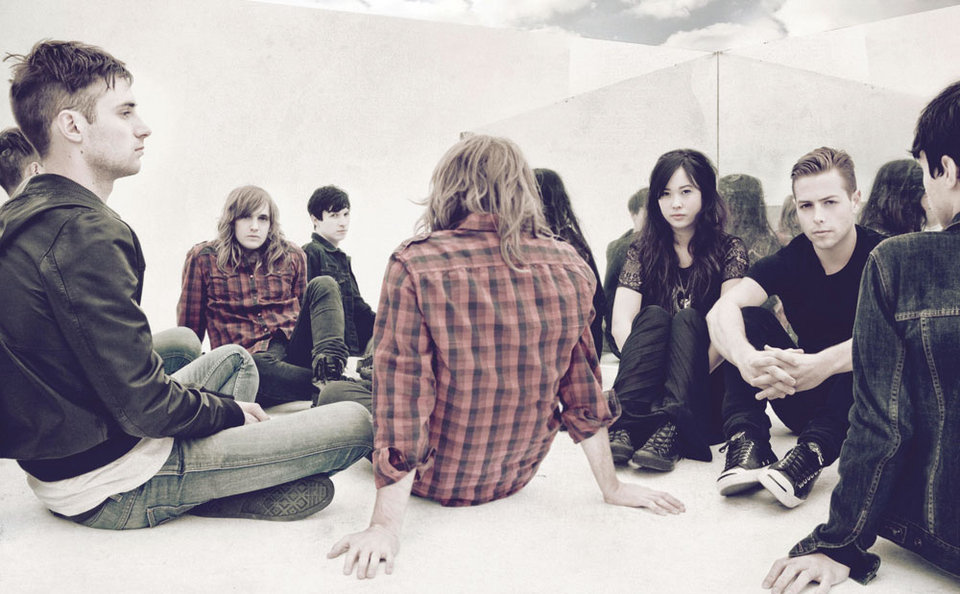
The Naked and Famous
282
Number of people killed in traffic accidents during the 7-day period around the New Year Festivities.
32.9%
Percentage of accidents resulting from drunk driving.
Nitirat VS Thammasat
Thammasat University agonized over what to do with the Nitirat group, which is fiercely critical of the lese majeste laws, and hence fiercely hated by royalists. In the end, Thammasat stood on the side of free speech.
The Abortion Scandal
Howard Wang allegedly convinced his Maxim model girlfriend to get an abortion.
Asiatique
The giant riverside mall finally revived the spirit of the much-missed Suan Lum night bazaar and gave the riverside a cool new place to stroll, eat and drink. It stirred up a social media storm again 12 months later with its dual-priced Ferris wheel—B250 for foreigners, B200 for Thais—and the Dutch operator ultimately raised prices to B250 for all.
The Naked and Famous
The fast-rising indie electro starlets from Auckland rocked Moonstar with their all-too-brief gig.
Simsimi
You know you’ve gone viral when the Ministry of Culture wants you banned. But for Simsimi to die, all they had to do was wait.
Faux Frenzy
Chocolate Ville, with its fake lighthouse and Disney village vibe, opened to packed crowds who just can’t get enough of the Wine I Love You team’s mix of Thai and inter dishes.
Black Lips
The psychedelic “flower punk” rockers made their much anticipated debut in Bangkok and didn’t disappoint.
Scarlett
One of the year’s coolest openings was, of course, another wine bar. Scarlett boasts sweeping views of Silom, an actual wine menu and decent food, though, unlike much of the competition.
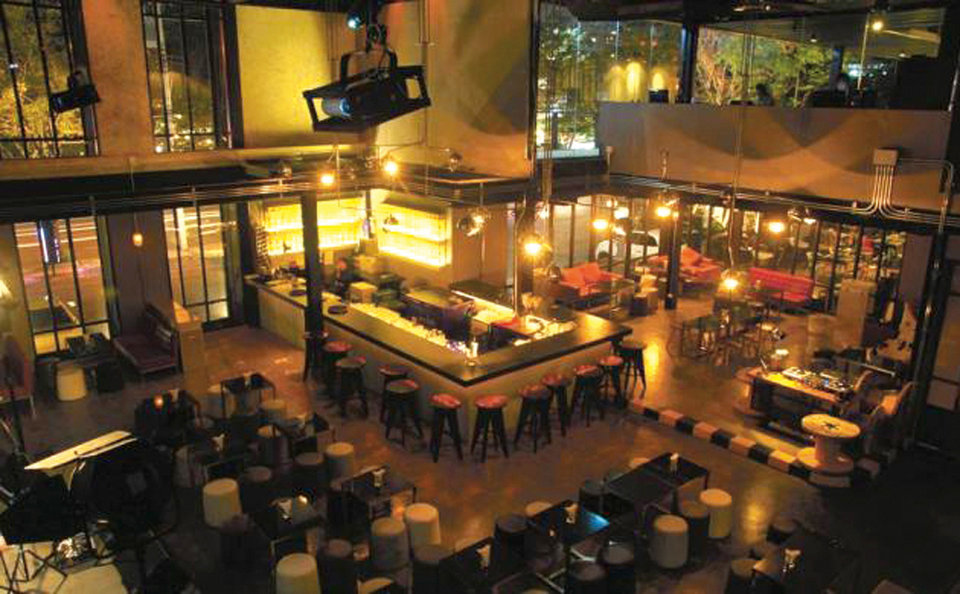
SONIC
64%
Number of people interviewed who said that food prices, not political conflict, was their biggest concern. Attempts to control the price of khao kaeng ensued, and ultimately failed.
Bars with the Word Wine
This trend started last year, but 2012 saw even more of a wine obsession: new branches of Wine Connection, The Wine Bar, Wine We Well, I’m Wine...
SONIC
One of the biggest boosts to the improved indie scene was the arrival of this new venue in the heart of Ekkamai; complete with a decent sound system.
The Sleeveles Garden
The new brand does vintage at local prices, and we at BK became instant fans of their leather bags.
The Slap
A customs official slapped a security officer. But, for once, the poo yai got into trouble.
FOUR SEASONS-GATE
Our PM went to a hotel during work hours and met some businessmen. Shock ensued.
Hey, Big Spender
The B2 billion compensation package approved for victims of the 2010 protest failed to achieve reconciliation. As for the B2.27 trillion infrastructure and flood rehabilitation package, it just raised fears of massive corruption.
“It’s NORMAL TO DRINK BUT I WASN’T DRUNK”
Deputy PM Chalerm Yubamrung on his odd behavior in parliament following his attendance at a wedding.
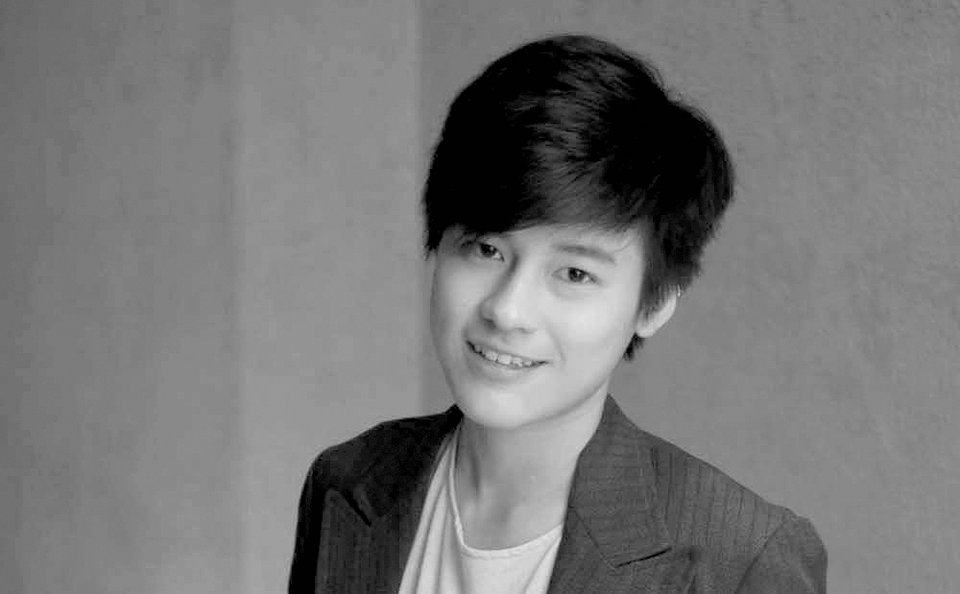
Kittichaya “Key” Gaesuwan
Pichet Klunchun
Pichet was the highlight of La Fete, with his last performance ever of Pichet Klunchun and Myself, followed by a renewed focus on his Chang Theatre.
Kittichaya “Key” Gaesuwan
Her role in She didn’t got unnoticed, as her acting talent and androgynous good looks swept boys, girls and everything in-between off their feet.

Shakespeare Must Die
Shakespeare Must Die
The Thai Film Censorship board banned director Ing K’s Macbeth interpretation of Macbeth for “causing divisiveness.” “All this is nonsense. We’re talking about a horror movie!” Ing K told BK ahead of the ban’s appeal. The appeal was not granted.
Dickinson’s Culture Café
One of the hottest openings on Phra Athit this year, Dickinson’s blends the best of Café Democ and Club Culture’s sounds in what looks like a classic bakery-cum-pawn shop.
Good to be Gay
gCircuit (April 13-15) was bigger and better than ever before thanks to a rooftop location at CentralWorld and the super cute porn star, Koh Masaki.
Movies with Rak in theIR Title
We began this year with Rak Wei Hei and ATM Err Rake Error in January, things continued with Rak Leaw Few Ah and Rak in February. March brought Rak Sood Teen and Rak Aow Yu. And Rak 555 opened in April. Yes, there is such a thing as too much love.
I’m gonna tell Kru AnGkana!
The little boy who’s going to tell on you garnered 1.2 million views.
Hot Prints
Local designers Lalalove London and Painkiller usher out the pastel trend with big, bold prints.
11 million
Numbers of pictures users had uploaded to Instagram by April 2012, according to Zocialrank.com. That was just the beginning, though, and it’s probably closer to 11 million a day by now.
Return of the 90s
Joni Anwar’s comeback concert signaled a sudden revival of Thai pop stars from one or two decades ago, from Wasit Mookdavijit’s return (of Crub and Day Tripper) and Nuvo’s reunion gig to the Sonic Attack 2012: 90s-The Best! concert.
Siam Vintage
It looks like a gallery in an old European department store, but it’s actually Siam’s new hipster mecca, packed with stores dedicated to the whole preppy, vintage trend.

Lady Gaga
Mall Overload?
The Nine, Rain Hill, Thaniya Shopping Plaza—the community mall craze kicked off by K Village in 2010 showed no sign of slowing down. But with Mega Bangna opening (May 5), big continues to be best on the city’s outskirts.
Chompee Champion
With Death in Venice, Jitti Chompee takes his physical and experimental dance style to an empty swimming pool lined with garbage bags. In 2012, he also performed in P.Tendercool’s warehouse and Bed Supperclub, showing you don’t need a theater to put on sold-out performances.
Lady Gaga
Fake Rolex scandal. Traditional Thai headpiece scandal. Thai flag scandal. Overpriced tickets scandal. Mother Monster was fittingly scandalous.
Speakeasy Clones
When the elegant Speakeasy opened on the top floor of Muse, prohibition-chic and Boardwalk Empire elegance still seemed like a fresh concept. Eight months later, the speakeasy trend is getting pretty tired, not just in Bangkok but all over Southeast Asia.
3
Number of Boeing 747s required to deliver Lady Gaga’s equipment.
Galaxy SIII
It got more Google searches in 2012 than the iPhone 5, it topped CNET’s Best Phone of the Year list and, for the very first time, it proved Apple was not necessarily the world’s best smartphone maker.
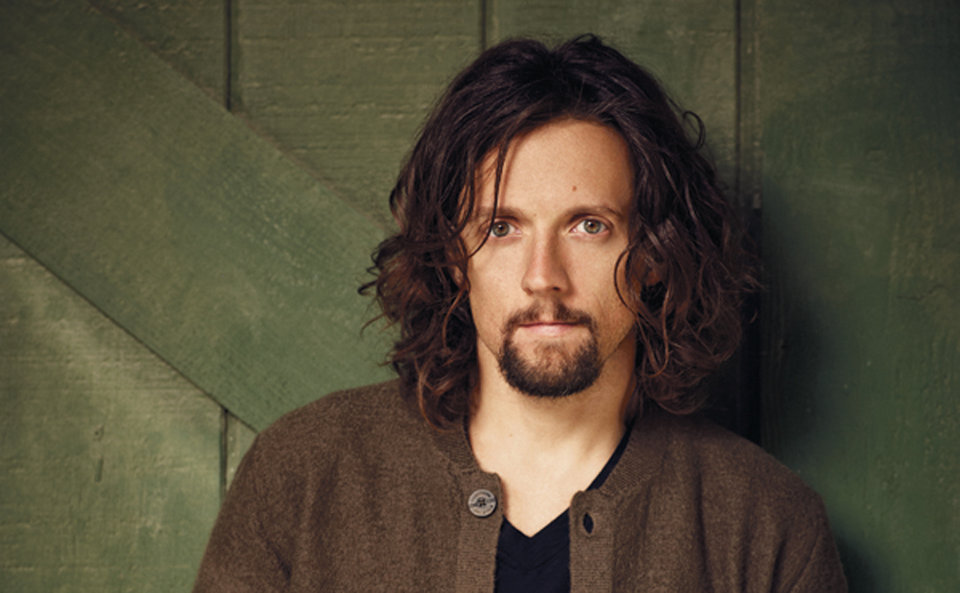
Jason Mraz
B350,000-B500,000
Price 95 police cadets paid to have answers to the academy’s exam wired to them by radio.
B500,000
Fine for Channel 3 after a woman bared her breasts while painting a canvas on Thailand’s Got Talent. Huge publicity for TGT followed, along with promises that this was a terrible mistake and that it will never happen again.
Isaan Indoors
Somtam Der (our favorite), Noreste, Café Chilli Zaap and Thai Lao Yeh all opened in the first half of 2012, and all pledged to deliver somtam that’s even better than at the street-side stalls despite their handsome decors.
Nose-to-tail
Smith, soon followed by Quince, marked renewed interest in eating every little bit of your favorite farm animals, from calf’s tongue to pig’s bone marrow.
Jason Mraz
After having to cancel a gig in Khao Yai last year, the globally adored crooner finally made it to Bangkok.
Moving Democracy
Café Democ leaves Democracy Monument and reopens at Silom Plaza where it’s been delivering top-notch electro ever since.
Cocktail Revival
As people gradually bored of the whole wine thing, cocktails made a comeback with more Thai mixologists finally making a name for themselves: Karn Liangsrusuk at Escapade, Passapong Phetpradit at W XYZ and Ronnaporn Kanivichaporn, who designed the cocktails at Roof by Muse.
ONLINE FASHION
Symbols of Style launched the retail part of their online lifestyle magazine. But the whole year really marked a boom in online fashion retail, thanks to Zalora, Reebonz, Central, Siamism (from Siam Center).
B41.7 billion
Estimated amount Thais spent on gambling during Euro 2012.
B400 million
Amount paid by Grammy for the rights to broadcast the Euro 2012 tournament in Thailand, which resulted in True cable subscribers not being able to see the games and nearly triggered a civil war.

P-047
64,000
Donuts distributed to poor people nationwide to commemorate Thaksin’s birthday.
6
Number of babies born to mother Duangchanok Wangwitthayaskul, the first recorded case of sextuplets in Thailand. All were named after their parents’ favorite car brands.
DON MUEANG COMEBACK
Thai AirAsia confirmed it would move all its domestic and international flights from Suvarnabhumi to Don Mueang from October, part a three-stage development that will see the airport ultimately handle 66.5 million passengers a year by 2027.
Best In Show
P-047, the first independent production from veteran Bangkok director Kongdej Jaturanrasamee, opened and showed that Thai cinema can still do mind-bending indie thrillers; while Echo Planet and Yak (Oct) proved that local 3D animated flicks are on the rise.
Radio Retro
Hip Isaan roots-repping record label ZudRangMa expanded its tastemaking orbit by launching a relentless bi-weekly podcast series.
Code Red
Agent provocateur Manit Sriwanichpoom’s latest exhibition, Obscene, opened at H Gallery, taking aim at the PR machine behind Yingluck’s rise to power.
Hot Air
NASA cancels an atmospheric study of climate in Thailand after a decision on whether to approve its request to use Thailand’s U-Tapao air base as the project’s operations center was delayed and delayed some more. Critics argued it could be a cover for military or weather-controlling purposes.
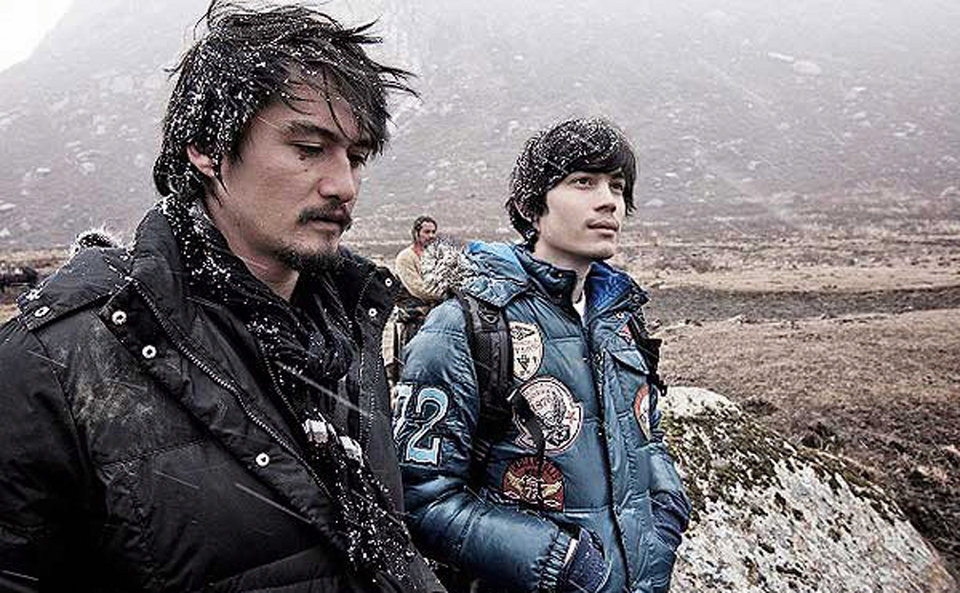
Shambhala
Olympic Anguish
Thailand’s haul of 2 silver and 1 bronze medals at the London Olympics 2012 marked a fall from 2008 (2 gold, 2 silver). Hardly surprising when only 38 athletes were sent to compete, compared to 51 four years earlier.
Sonic Youth
90s kids got their retro fill as 13 Thai indie rock bands from that era were joined by Britpop faves Suede for Sonic Attack at BITEC.
The internet is eating itself
A portly young man strikes a hieratic pose, a fine sheer dress floating about him. Meet Mae Ban Mee Nuad. Over 114,000 Facebook followers can’t be wrong.
Ocean of What?
The wonderful all-white electro festival from exotic Europe, Sensation, arrived in Bangkok without even announcing its line-up of “the world’s best DJs.” Still, didn’t we all have a good time?
Shambhala Shambles
Another big-money Thai flick, another star vehicle takes a wrong turn…all the way to Tibet. We’re sure plenty of soul-searching is still going on.
B350 million
Amount of drug money controlled by just five inmates at Nakhon Si Thammarat prison, using over 300 different bank accounts.
70%
Percentage of unemployed people in Thailand who do not seek work.
40 million
Total Youtube views that PSY’s “Gangnam Style” got from Thailand, out of 852 million views worldwide.

BK on iPad launches!
BK on iPad launches!
And soon won best publishing app at the Asian Publishing Awards 2012. Download it at bkmagazine.com/bkapp
Zense and Zensibility
After two years away, popular rooftop haunt Zense Gourmet Deck & Lounge Panorama returned to the city cramming five kitchens under the one renovated roof courtesy of Amata Luphaiboon, who designed Sala Phuket Resort and Six Senses Hideaway Samui.
Red Bull Outrage
The young heir to the Red Bull energy drink empire was accused of killing a motorcycle policeman after hitting him with his Ferrari
Relentless Rock
Former Oasis guitarist and notorious bad boy Noel Gallagher kicks off Bangkok’s season of rock with his band the Flying Birds coming to town on Sep 20, followed by Keane on Oct 4 and Maroon 5 on Oct 8.
H&M
After Uniqlo opened, it seemed the only global fasion chain missing in Bangkok was H&M. That’s now been fixed. We can die happy.
Craft beers
After years of the same old beer, Bangkok is suddenly awash in boutique brews
Culture One
Bangkok’s biggest electro fest turned 5.
B200,000-300,000
Amount the army paid each month to keep its airship inflated, which at B350 million had still never flown after two years on the ground. After paying an extra B50 million, the army got it to fly, then crashed it, with costs to repair it now estimated at B30 million.
Wet and Wild
Lovers of naked public baths rejoiced as Thailand’s first onsen, Yunomori Onsen & Spa, opened, while just across the parking lot, thrill-seekers can now try to keep their kit on while riding the machine-made waves at Flow House.
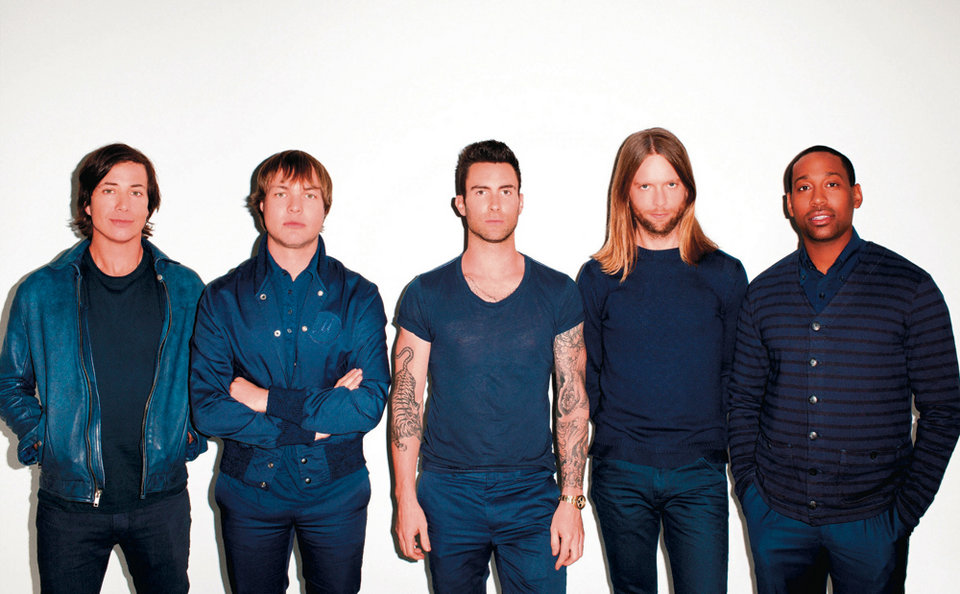
Maroon 5
Maroon 5
Tickets to see Adam Levine and the boys sold out in moments, demonstrating that Bangkok loves him, and that the art of scalping tickets is alive and well.
Yak
Not only is it a Thai movie we can be proud of, but it’s an animation. A bit long-winded at times, Yak wasn’t necessarily the easiest movie for kids, but it remains a great adventure.
21.9%
Percentage of television audience in Bangkok who watched the final episode of TV soap Rang Ngao, Channel 3’s most watched lakorn ever.
Signor Sassi
Did the city really need another swanky rooftop restaurant? Of course we did! And this London import already has branches in Lebanon and Kuwait, so it must be doing something right.
Good Bread
With the farmer’s market at Bo.lan going strong, and Quince serving Michael Conkey’s bread (www.facebook.com/conkeysbakery), there’s more and more opportunities to eat really good bread in Bangkok, such as the loaves from Maison Jean-Philippe (tiny.cc/uocwlw).
Longboards versus Fixies
Fixies clearly continue to dominate the streets, despite a few hipsters turning to the elongated skateboards. Need proof? The number of bike-obsessed cafes we now have in Bangkok: Velayenn, Aran Biciclette, Seal Urban, Sweet Pista and newcomer Café Velodrome.
B4.8 million
Price of House Speaker Somsak Kiatsuranond’s fact-finding mission to a football match in England.
Futsal Fiasco
On Nov 1, the FIFA Futsal World Cup kicked off, only not at the B1.2 billion stadium Bangkok built for it. “Not ready,” said FIFA. “Not my fault,” said our governor, who blamed the floods and threatened to sue FIFA.
Babble & Rum
Just the kind of chill, modern bar the riverside needed. Particularly if you need to warm up before hitting the madness on Phra Athit. Still on the riverside, The Siam launched Deco Bar with a 1920s jazz influence.
Art Out of the Box
Not only did we have a great cultural season in 2012’s last three months, but we saw art leave traditional spaces and take over bars and warehouses. The Bangkok Poetry Night grew a sister event, Bombyx, more focused on traditional narration. Jam Café Bangkok opened with resolutely artsy intentions. And P.Tendercool continued to welcome Jitti Chompee’s bold performances in its warehouse.

Le Beaulieu
Winter? What Winter?
The beer parks are here, but not the “winter breeze” we here at BK have been dreaming about all year.
Obama!
Not only did he get reelected, but he quickly followed that up with a visit to Thailand—clearly, the man knows how to celebrate. The highlight? Carefully selected images that made Yingluck look she was trying to compete with Michelle O.
Le Beaulieu
The French fine dining institution moved to new digs at the Athenee Office Tower. The food is still classic, still superb and still super expensive.
Wet Dreams
Pheu Thai MP Prasit Chaisrisa asked Democrat MP Rangsima Rodrassami if she’d object to him dreaming about her. She was not impressed.
JJ Green
Chatuchak got a new neighbor, an outdoor mall with 150 cutesy air-con boutiques spread over 21 rai.
Adieu Pepsi
Thailand was one of the very rare countries where Pepsi outsells Coca-Cola. Now you can hardly find Pepsi at all, after Est entered the scene with the backing of Pepsi’s former distributor.
Boonlert Bust
Pitak Siam’s 12,000-strong rally falls a tad short of General Boonlet’s promise of flooding the streets with one million people.

Elton John
2nd
Rank of Thailand in the list of countries who have viewed “Gangnam Style” the most. ‘Nuff said.
Old Brits
Elton John and Sting were in town. Not that we’re complaining about getting a couple of elder statesman, since this year saw plenty of fresh acts coming to Bangkok.
The Impossible
Yes, The Impossible was focused on an affluent British family on vacation at a high-end resort, leading some to complain that the film did not represent the 170,000 Asians who died in the 2004 tsunami. But it did capture all the drama of the tsunami in Khao Lak as experienced by all who were there, foreigners and locals alike. A superb film.
WHOSE THE GOV?
Less than two months from the Feb 17 gubernatorial election, the democrats have yet to confirm Sukhumbhand while Pheu Thai have yet to name their candidate.
The APOCALYPSE
The Mayan calendar ended with a whimper. But at least we got some good parties out of it.
Advertisement
If phones are the new compacts and compacts the new DSLRS, where does that leave entry-level DSLRs? For committed enthusiasts, we’d argue that a small, affordable DSLR like the Canon 650D is the new semi-pro tool. Sure it doesn’t look the part, but it’s a lot cheaper and there’s not much it can’t do when compared to the big boys. To ensure a fair and proper test we got our hands on a Canon 650D DSLR and then took it with us on a trip to Nepal.
· We tested the kit that comes with two lenses, the 18-135mm f/3.5-5.6 IS STMand the very flat “pancake” 40mm f/2.8 STM. Both lenses are a joy to use. The zoom is very well stabilized and the fixed 40mm is an excellent low-light portrait lens that produces beautiful out-of-focus backgrounds.
· Image quality is impeccable, and with 18 megapixels, you’ve got a big canvas to play with.
· External flash control is a welcome addition (something Nikons have had for years) to let you get arty with your flash.
· The autofocus is fast, the camera is reasonably quick (5 frames per second even when shooting RAW) and controls are well laid-out. Overall, it’s a camera that gives you a real sense of control, even if you’re used to the higher end models’ extra dial.
· The touch screen is neat, but we didn’t use it that often. The fact that it tilts and swivels is very useful to explore creative angles; though, and a feature that is actually becoming rarer on cameras these days.
· The Full HD 1080p video is gorgeous, too, if you can nail the focus (see below).
· Canon is very proud of its Movie Servo Autofocus. Fact is, it’s only a marginal improvement and still doesn’t work as well as mirror-less system cameras like the Sony NEX series. DSLRs just don’t focus well when shooting video.
Verdict:
People tend to get cameras that are overkill given what they end up using them for. If you’ve never edited a video or tweaked a RAW file in Lightroom, but feel a bit limited by your compact, we think you might be better served by the Sony NEX series. If you’re a true enthusiast, though, this camera’s only limits are your talent and the lenses you can afford to put on it, meaning we highly recommend it.
Canon 650D with 18-135mm f/3.5/5.6 IS STM. 18MP Digic 5 sensor, HD 1080 video, max iso 12,800. B29,900. Canon EF40mm f/2.8 STM, B6,900.
Advertisement